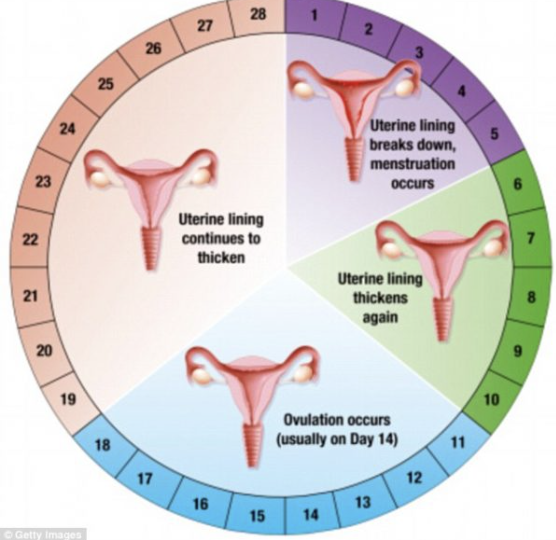Menstrual cramps, or dysmenorrhea, are a monthly reality for many women, but their severity is often underestimated. Research from top medical journals reveals that the pain women experience during their periods can be as intense as, or even surpass, some of the most severe pains faced by both men and women. This article explores the science behind menstrual pain, compares it to other types of pain, and underscores the importance of increased awareness and effective treatment.
The Science of Menstrual Pain
Menstrual cramps are caused by the contraction of the uterus as it sheds its lining, a process driven by the release of prostaglandins—hormone-like substances that trigger inflammation and pain. The intensity of these contractions varies among women, but for many, the pain is debilitating.
A study published in The British Medical Journal (BMJ) equated the pain of severe menstrual cramps to that of a heart attack. Dr. John Guillebaud, a professor of reproductive health, famously noted, “Menstrual cramps can be as painful as having a heart attack.” This comparison sheds light on the severity of dysmenorrhea, which is often dismissed as a routine part of menstruation. Dr Alison Edelman also echoed this in her studies.
Comparing Menstrual Pain to Other Severe Pains
To better understand the intensity of menstrual cramps, it’s useful to compare them with other severe pains experienced by men & women:
- Kidney Stones: Known for causing sharp, cramping pain in the back and sides, kidney stones are often cited as one of the most painful experiences a person can endure. A study in the Journal of Urology found that women who have experienced both severe menstrual cramps and kidney stones report that the pain is comparable. However, unlike kidney stones, which may occur once or twice in a lifetime, menstrual cramps are a recurring ordeal .
- Childbirth: Labor pain is another intense experience frequently compared to menstrual cramps. According to research published in Obstetrics & Gynecology, women with severe dysmenorrhea may have a heightened sensitivity to labor pain. While the intensity of labor pain may be higher, the chronic nature of menstrual cramps, occurring every month, significantly impacts a woman’s quality of life .
- Migraine Headaches: Migraine pain can be debilitating, but studies show that women who suffer from both migraines and severe menstrual cramps often rate their menstrual pain as equally or more intense. A study in The Journal of Pain found that the chronic nature of menstrual pain can be as disruptive as the acute episodes of migraine .
- Heart Attack: The pain of menstrual cramps has been likened to that of a heart attack. Dr. Guillebaud’s comparison has been corroborated by many women who have experienced both conditions, highlighting the need to take menstrual pain more seriously in medical practice .

The Need for Greater Awareness and Treatment
Despite the intensity of menstrual pain, it remains under-recognized and under-treated. Women are often told that their pain is “normal,” with many being advised to manage it with over-the-counter painkillers. However, for those with severe dysmenorrhea, these measures are frequently inadequate.
Research suggests that more effective treatments are available but are underutilized. Hormonal therapies, such as birth control pills, can reduce the production of prostaglandins, while prescription nonsteroidal anti-inflammatory drugs (NSAIDs) can offer more targeted pain relief. Lifestyle changes, including regular exercise and dietary adjustments, have also been shown to alleviate the severity of menstrual cramps .
Recognizing and Addressing Menstrual Pain
The comparison of menstrual pain to other intense pains underscores the need for greater awareness and more effective treatment options. While menstrual cramps are a normal part of menstruation, the severity experienced by some women demands attention from the medical community.
As Dr. Guillebaud and other experts have noted, recognizing the intensity of this pain is the first step toward providing the necessary care. Just as other severe pains are treated with urgency, so too should menstrual pain be addressed with appropriate medical support and interventions.
In an era where celebrities and public figures frequently share aspects of their private lives, this conversation also serves as a reminder of the importance of sensitivity and discretion in discussing health issues. The private nature of menstrual pain, compounded by societal stigmas, makes it all the more important for healthcare professionals to approach this topic with understanding and compassion.
By acknowledging the severity of menstrual pain and advocating for better treatment options, we can improve the quality of life for millions of women who suffer in silence.

References:
- Guillebaud, J. “Menstrual Pain and Heart Attacks: A Comparison.” The British Medical Journal.
- “Comparison of Pain: Kidney Stones vs. Menstrual Cramps.” Journal of Urology.
- “Sensitivity to Labor Pain in Women with Dysmenorrhea.” Obstetrics & Gynecology.
- “Menstrual Pain vs. Migraine Pain: A Comparative Study.” The Journal of Pain.
- Guillebaud, J. “Understanding the Pain of Dysmenorrhea.” The British Medical Journal.
- “Effective Treatments for Severe Menstrual Cramps.” Journal of Women’s Health.
- “Lifestyle Interventions for Dysmenorrhea.” American Journal of Lifestyle Medicine.